Related Research Articles
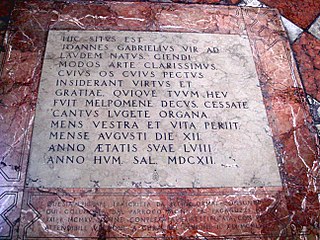
Giovanni Gabrieli was an Italian composer and organist. He was one of the most influential musicians of his time, and represents the culmination of the style of the Venetian School, at the time of the shift from Renaissance to Baroque idioms.
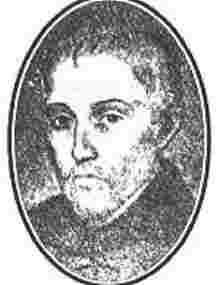
Tomás Luis de Victoria was the most famous Spanish composer of the Renaissance. He stands with Giovanni Pierluigi da Palestrina and Orlande de Lassus as among the principal composers of the late Renaissance, and was "admired above all for the intensity of some of his motets and of his Offices for the Dead and for Holy Week". His surviving oeuvre, unlike that of his colleagues, is almost exclusively sacred and polyphonic vocal music, set to Latin texts. As a Catholic priest, as well as an accomplished organist and singer, his career spanned both Spain and Italy. However, he preferred the life of a composer to that of a performer.

Maria Teresa Agnesi Pinottini was an Italian composer. Though she was most famous for her compositions, she was also an accomplished harpsichordist and singer, and the majority of her surviving compositions were written for keyboard, the voice, or both.
Sylvia Foodin Glickman was a pianist, composer, teacher, and prominent promoter of music by women composers.
Caterina Assandra was an Italian composer and Benedictine nun. In her surviving motet book, Motetti a due a tre voci op.2, Assandra alludes to her birthplace being in the Province of Pavia. She became famous as an organist and published various works during her lifetime. Her work Motetti a due, was dedicated to G.B. Biglia, the Bishop of Pavia, and was first recognized by publisher Lomazzo. Although Assandra had accumulated a substantial reputation for her works as a composer, even reaching outside the borders of Italy, she was at times confused with an 18th-century composer with the same name. And although the date of her birth is approximate, the date of her death is still unknown.
Settimia Caccini was a well-known Italian singer and composer during the 1600s, being one of the first women to have a successful career in music. Caccini was highly regarded for her artistic and technical work with music. She came from a family of well-known composers and singers, with her father being Giulio Caccini and her sister Francesca Caccini. Settimia Caccini was less well known as a composer because she never published her own collection of works. Instead, nine works are attributed to her in two manuscripts of secular songs. Settimia was known much more for her talent as a singer, and she performed for nobility with the Caccini family consort and as a soloist. Coming from a musical family, she was able to lead herself to her own fame and success.
Vittoria Aleotti, believed to be the same as Raffaella Aleotta was an Italian Augustinian nun, a composer and organist.
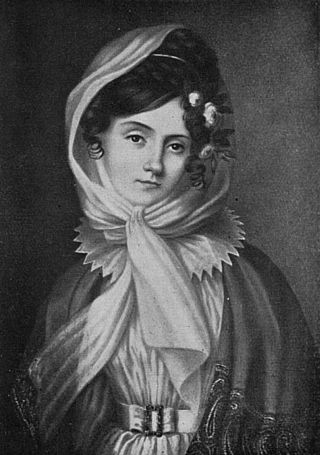
Maria Szymanowska was a Polish composer and one of the first professional virtuoso pianists of the 19th century. She toured extensively throughout Europe, especially in the 1820s, before settling permanently in St. Petersburg. In the Russian imperial capital, she composed for the court, gave concerts, taught music, and ran an influential salon.
Lucrezia Orsina Vizzana was an Italian singer, organist, and composer. She entered the Camaldolese convent of S Christina in Bologna in 1598. She was taught by her aunt, Camilla Bombacci, who was the convent organist, and by Ottavio Vernizzi, who was the unofficial music master. Vizzana's works are influenced by stile moderno music, especially the works of Claudio Monteverdi.
Anna Bon was an Italian composer and performer. Her parents were both involved in music and traveled internationally; her father was Girolamo Bon, a Bolognese librettist and scenographer, and her mother was the singer Rosa Ruvinetti Bon.
Camilla de Rossi was an Italian composer known for composing oratorios in Vienna during the early 1700s. De Rossi has the most surviving works of the women composers in Northern Italy and Austria during this period.
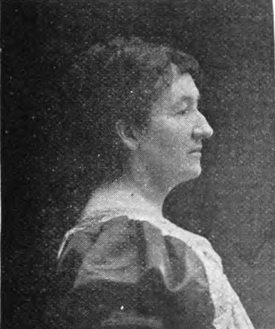
Clara Kathleen Barnett Rogers, was an English-born American composer, singer, writer and music educator.
Chiara Margarita Cozzolani, was a Baroque music composer, singer and Benedictine nun. She spent her adult life cloistered in the convent of Santa Radegonda, Milan, where she served as prioress and abbess and stopped composing. More than a dozen cloistered women published sacred music in seventeenth-century Italy.
Cornelia Calegari [Maria Cattarina ], was an Italian composer, singer, organist, and nun. She was revered for her singing talents in her home city and became a published composer in 1659, at the age of 15, with the release of her book of motets, Motetti à voce sola.

Alba Trissina or Alba Tressina, was an Italian composer and nun. She was a Carmelite at the monastery of Santa Maria in Araceli in Vicenza, and studied with Leone Leoni, who also preserved and published four of her works. Leoni dedicated his Quarto Libro, 1622, to this pupil.
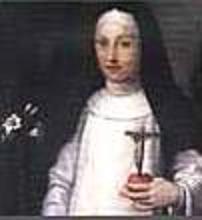
Claudia Sessa was an Italian composer and singer/instrumentalist. She was born into the (de) Sessa family, a patrician clan of the Milanese aristocracy. A nun at the convent of S. Maria Annunciata, she composed two sacred works published in 1613. The dates of her birth and death are uncertain. Gerolamo Borsieri wrote a long and glowing description of her, including that she sang and accompanied herself so well "that there was not a singer who could equal her" and that nobility in Parma and Mantua liked her singing more than "Claudio Monteverdi [or] any other musician in the recitative style..."

Loïsa Puget was a French composer.
Sophie Lebrun Dülken was a German pianist and composer, the daughter of Munich court oboist Ludwig August Lebrun and singer and composer Francesca Lebrun. Sophie Lebrun was born in London while her mother was on tour. Both she and her sister, the singer and actress Rosine Lebrun, studied singing with their uncle, composer Franz Danzi, and piano with Andreas Streicher.
Cappella Artemisia is an Italian all-female vocal group specializing in the music of the convents of 17th-century Italy. The group was founded by the American, but resident in Italy, singer and musicologist Candace Smith. Smith is also co-publisher, with her husband cornettist Bruce Dickey of editions of this music through Artemisia Editions. The main repertoire of the group focuses on nun composers themselves - including Raphaella Aleotti, the first nun to publish as a composer, Maria Xaveria Perucona and Isabella Leonarda, Chiara Margarita Cozzolani and Rosa Giacinta Badalla, Sulpitia Cesis, Alba Tressina, Lucrezia Orsina Vizzana and Caterina Assandra. The ensemble also performs works of the male composers - some monks, some secular - who dedicated works to the convents.
Maria Xaveria Perucona or Parruccona was a nun and composer in 17th Century Italy.
References
- "Sulpitia Cesis", Grove Music Online , ed. L. Macy (accessed September 13, 2006), grovemusic.com (subscription access).
- Women Making Music: the Western Musical Tradition, 1150–1950 ed. J. Bowers and J. Tick. "The Emergence of Women Composers in Italy, 1566–1700" by Jane Bowers. Urbana, IL. 1986. ISBN 0-252-01470-7
- "Cesis, Sulpitia." Grove Music Online. Oxford Music Online. 6 Feb. 2011 <http://www.oxfordmusiconline.com/subscriber/article/grove/music/05332>.
- https://web.archive.org/web/20110708115034/http://www.cappella-artemisia.com/discography/572801
- http://www.stabatmater.info/cesis.htm
- http://www.hildegard.com/composer_detail.php?id=47
- https://books.google.com/books?id=XoXXjeuncjMC&dq=sulpitia+cesis&pg=RA1-PA48
- Smith, Candace (1996). Schleifer, Martha Furman; Glickman, Sylvia (eds.). Women Composers: Music Through the Ages.1. New York: G.K. Hall. pp. 163-167.